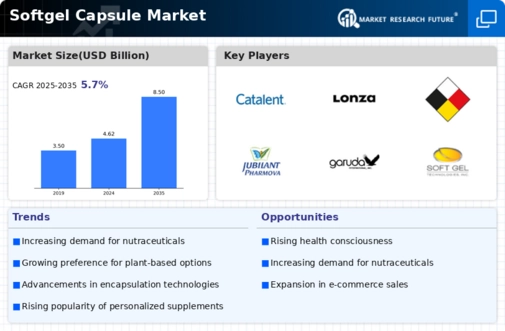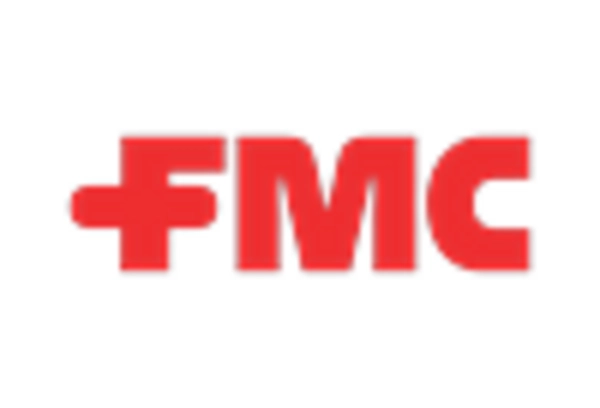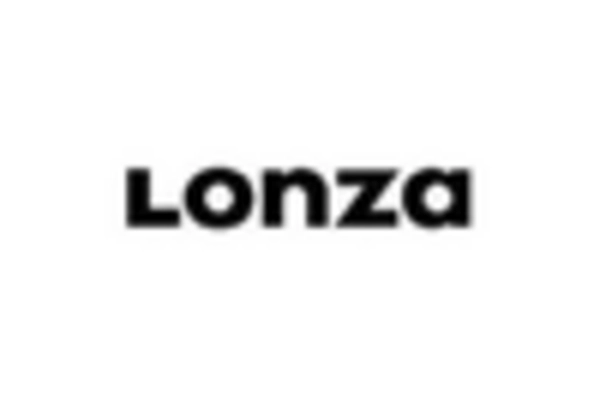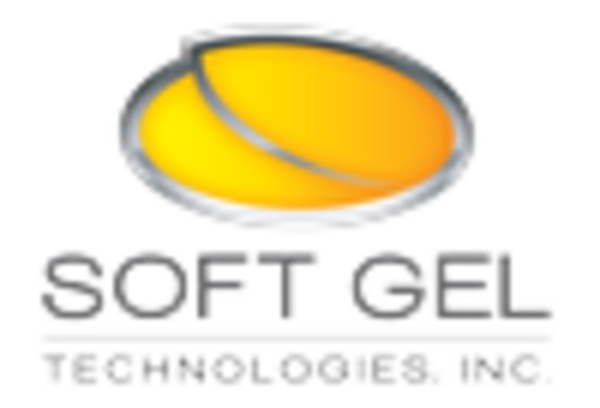Market Share
Softgel Capsule Market Share Analysis
The trajectory of the global Gross Domestic Product (GDP) experienced a turbulent phase between 2014 and 2016, with subsequent signs of recovery. As of the end of 2018, the global growth rate is anticipated to witness an upswing, projected to reach 3.6%. This positive economic momentum has a ripple effect on the healthcare sector, with the total share of GDP allocated to healthcare expenditure on the rise. In 2014, the global healthcare expenditure stood at USD 7.82 trillion, and by 2018, it is anticipated to soar to USD 9.2 trillion, reflecting a significant increase of 17.64%.
The escalation in healthcare expenditure is a multifaceted phenomenon influenced by a confluence of factors shaping health systems worldwide. One prominent factor driving this surge is the continuous evolution of medical technology. The advent of groundbreaking medical technologies has not only expanded the scope of healthcare services but has also necessitated increased financial allocation to support these advancements.
Additionally, the introduction of new health services has contributed to the burgeoning healthcare expenditure. As healthcare providers strive to meet the evolving needs of the population, the incorporation of novel services requires substantial financial investments. This includes the integration of preventive care, personalized medicine, and innovative treatment modalities that aim to enhance overall healthcare outcomes.
Changes in health policies on a global scale have also played a pivotal role in shaping healthcare expenditure trends. Governments and regulatory bodies, recognizing the dynamic nature of the healthcare landscape, often revise policies to ensure optimal healthcare delivery. These policy changes can impact funding mechanisms, reimbursement structures, and overall healthcare spending.
The restructuring of organizational frameworks within health systems further contributes to the escalating healthcare expenditure. Healthcare organizations worldwide are adapting to new models that prioritize efficiency, patient-centric care, and improved outcomes. However, these transformations often necessitate substantial investments in infrastructure, training, and technology adoption.
Moreover, the global push for greater access to healthcare services has amplified the financial commitments to the sector. Efforts to bridge healthcare disparities and enhance accessibility for diverse populations entail significant financial investments in healthcare infrastructure, workforce development, and community outreach programs.
An illuminating perspective on healthcare expenditure in the United States comes from the Centers for Disease Control and Prevention (CDC). In 2015, the per capita national health expenditure in the U.S. amounted to USD 9,990, showcasing the significant financial commitment to individual healthcare. The total national health expenditure in the same year reached a staggering USD 3.2 trillion, underscoring the magnitude of the financial resources dedicated to sustaining the nation's health.
Notably, Medicare and Medicaid, two critical government-sponsored healthcare programs in the U.S., jointly constituted 77% of the home health spending in 2016. This statistic emphasizes the substantial role that government-sponsored healthcare initiatives play in shaping healthcare expenditure patterns.
In conclusion, the trajectory of global GDP and its subsequent impact on healthcare expenditure underscores the dynamic nature of the healthcare landscape. As economies recover and grow, the allocation of financial resources to healthcare reflects a response to various factors such as technological advancements, policy changes, organizational restructuring, and the pursuit of enhanced healthcare accessibility. The statistics from the United States provide a snapshot of the significant financial commitments involved, emphasizing the intricate interplay between economic growth and healthcare expenditure on a global scale.

















Leave a Comment